Examples of content marketing dashboards for every need



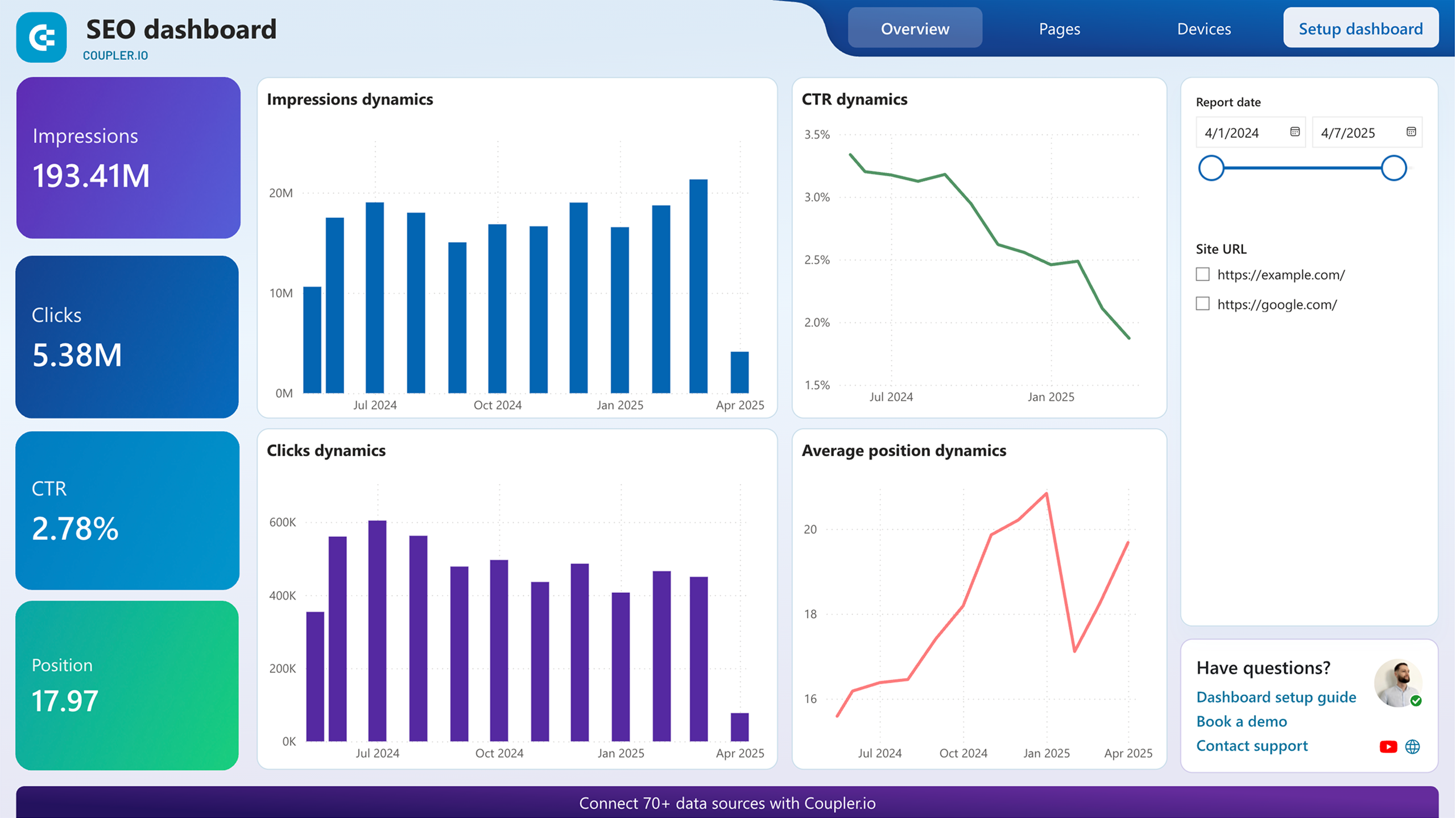


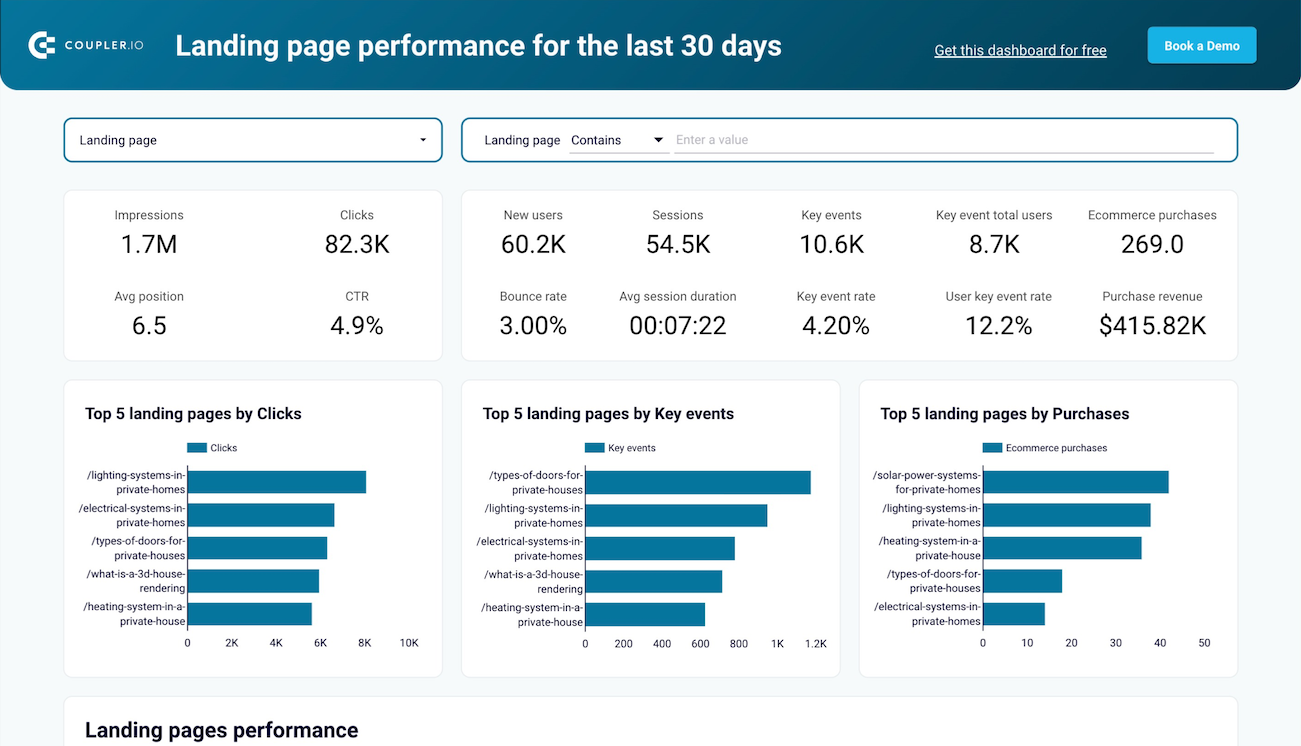



about your case. It doesn't cost you a penny 😉
Choose your white label content marketing dashboard to kick off
What is a content marketing dashboard?
White label content marketing dashboard solutions go beyond static reports by allowing you to track organic performance, identify high-converting landing pages, monitor keyword rankings, and optimize content based on actual user behavior. With automated data refreshing through Coupler.io, these dashboards ensure you're always working with up-to-date information without manual data exports or consolidation. This creates a single source of truth for your content marketing efforts, connecting SEO performance directly to business outcomes.
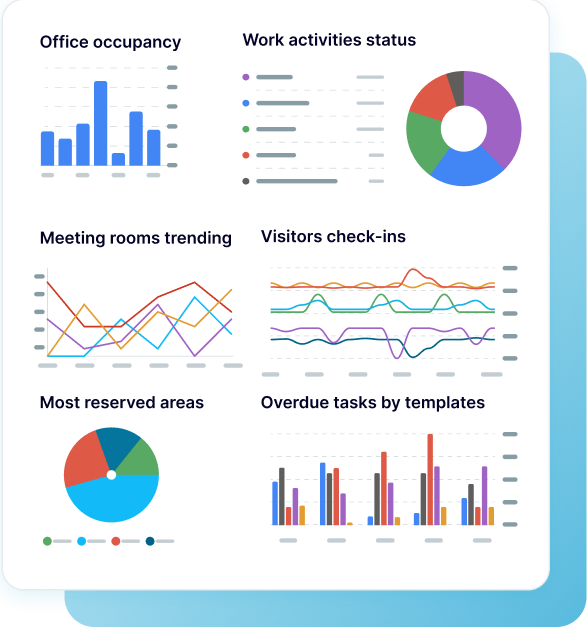
What reports should be included on a meaningful content marketing dashboard?
A comprehensive content marketing analytics dashboard should include several key reports that provide complete visibility into your content's performance. Based on our analysis of Google Search Console and Google Analytics-based dashboards, we recommend incorporating these two essential report types.
The SEO performance report is foundational, offering organic search insights that track your content's visibility and effectiveness in search engines. This report helps you identify seasonal fluctuations, trending topics, and content gaps that need addressing. It includes best and worst-performing pages analysis showing which content pieces are gaining or losing traction, as well as device-specific performance breakdowns to optimize the user experience across desktop, mobile, and tablet. With time-based analytics views, you can track weekly changes in organic traffic to measure the impact of your content updates and SEO strategy adjustments.
The landing page effectiveness report combines traffic acquisition metrics with on-page engagement data to provide a complete picture of how well your content converts visitors. It features top-performing landing pages by clicks, key events, and purchases to help you identify which content formats and topics drive the most valuable user actions. The report includes comprehensive metrics covering both search visibility (impressions, clicks, CTR) and user behavior (session duration, bounce rate, conversion events) to bridge the gap between traffic and business outcomes. So, for this you need to integrate a content marketing dashboard with Google Analytics. As a result, interactive filtering capabilities allow you to analyze specific content sets or campaigns to pinpoint exactly what's working and where improvements are needed.
What insights you can get with a content marketing analytics dashboard
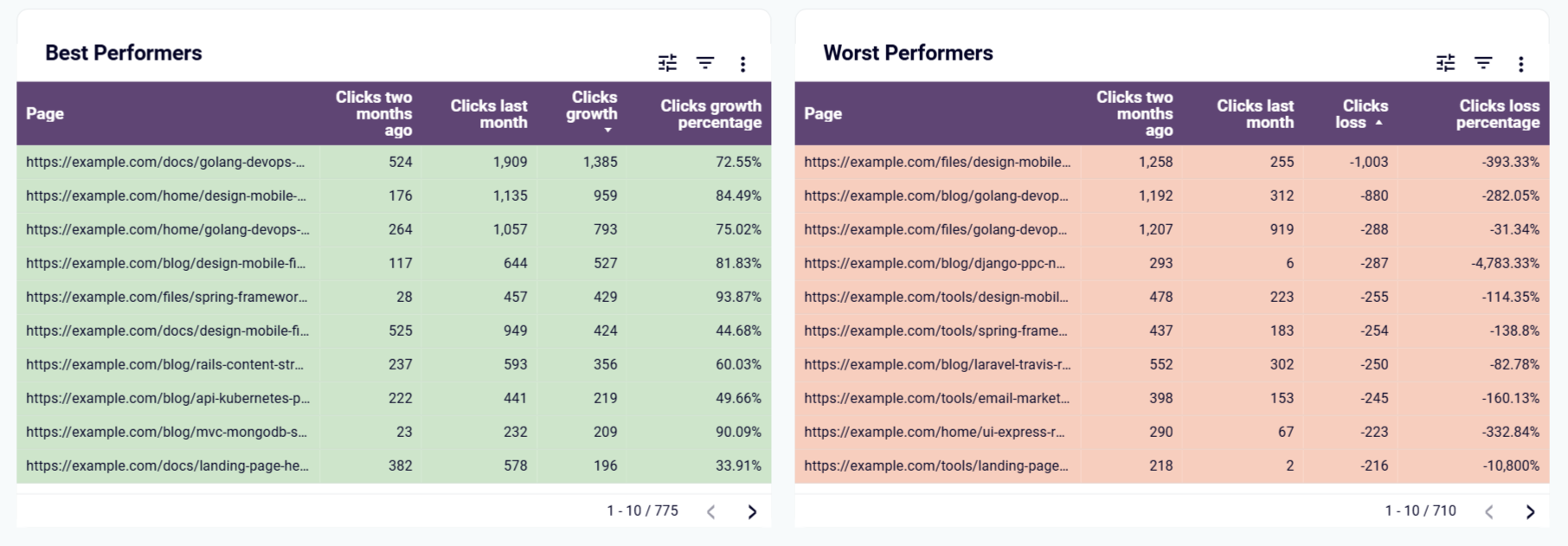
The SEO dashboard provides two dedicated tables comparing content performance month-over-month. These tables instantly highlight which pages gained traffic and which lost visibility, allowing you to quickly identify content that needs refreshing or promotion. When a previously high-performing blog post suddenly drops in traffic, you can investigate potential causes like algorithm updates, outdated information, or new competitor content, then take immediate action to recover its position.
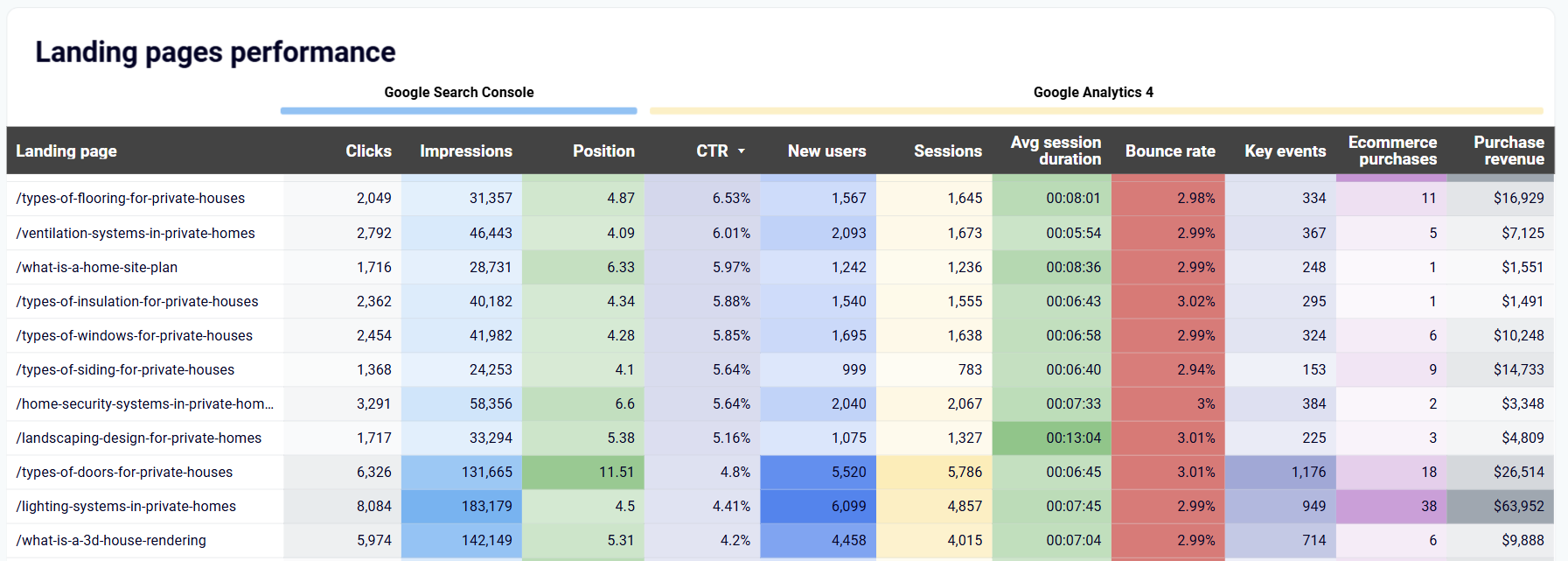
The landing page performance dashboard features a comprehensive breakdown table showing complete performance metrics for each content page. This detailed view enables deeper analysis by displaying both search metrics (impressions, clicks, position) and on-site engagement data (session duration, bounce rate, key events) side by side. This gives content marketers a holistic understanding of the entire content journey from search to conversion.
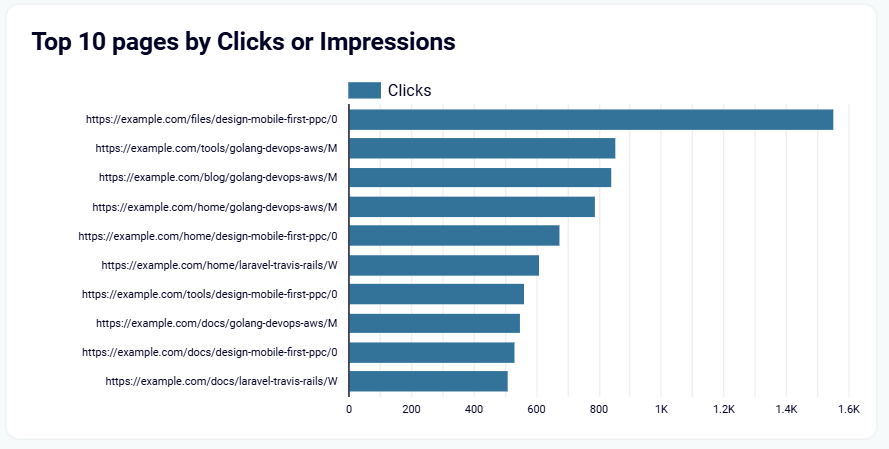
The content marketing dashboard displays your top 10 content pages ranked by clicks or impressions, helping you identify your most valuable content assets. This insight reveals which topics and formats resonate most with your audience and search engines, informing future content creation priorities. By analyzing common elements among top-performing pages—like content structure, word count, or media inclusion—you can develop stronger content templates and guidelines.

The dashboard highlights your top 5 landing pages by clicks, key events, and purchases, providing a clear picture of which content drives meaningful business actions. This allows you to distinguish between content that merely attracts traffic and content that actually converts visitors into leads or customers. You can use these insights to optimize underperforming pages by applying elements from your highest-converting content.
How to create a content marketing dashboard?

Metrics you can track with a content marketing dashboard template
Monitor the number of times users click through to your content from search results across all pages and time periods. This fundamental traffic metric helps you measure content discovery effectiveness and identify your most attractive content topics. By tracking clicks over time with your content marketing dashboard template, you can directly correlate content updates or promotions with actual traffic increases.
Track how often your content appears in search results, indicating its overall visibility and potential reach. This awareness metric helps you understand your content's discoverability before any user interaction occurs. High impressions with low clicks may indicate opportunities to improve your content titles and meta descriptions to increase click-through rates.
Measure the percentage of impressions that result in clicks, revealing how compelling your content appears in search results. This engagement metric helps identify which content titles and descriptions most effectively attract user interest. The content marketing metrics dashboard highlights CTR disparities across pages, allowing you to apply successful elements from high-performing pages to improve underperforming content.
Track where your content typically ranks in search results, both overall and for specific pages. This visibility metric helps you prioritize optimization efforts by showing which content is on the verge of breaking into higher-visibility positions versus content that needs more substantial improvements to compete effectively.
Monitor the percentage of visitors who leave your site after viewing only one page, broken down by landing page. This engagement metric helps identify content that attracts traffic but fails to encourage further exploration. The content marketing dashboard google analytics integration reveals pages with high bounce rates that may need better internal linking or call-to-action optimization.
Track significant user interactions with your content that indicate engagement and value, such as form submissions, video plays, or document downloads. This conversion metric directly connects content performance to meaningful business outcomes. By monitoring which content triggers the most key events, you can focus your creation efforts on formats and topics that drive actual results.
Measure how many first-time visitors your content attracts, indicating its effectiveness in expanding your audience. This acquisition metric helps distinguish between content that engages your existing audience versus content that successfully reaches new potential customers. Content that consistently attracts new users should be analyzed to identify elements that appeal to broader audiences.
Track how long users typically spend engaging with your content after arriving from search or other channels. This engagement metric helps distinguish truly valuable content from pieces that fail to hold attention regardless of their search visibility. The white label content marketing dashboard highlights content with both high visibility and strong engagement, identifying your most effective content assets.